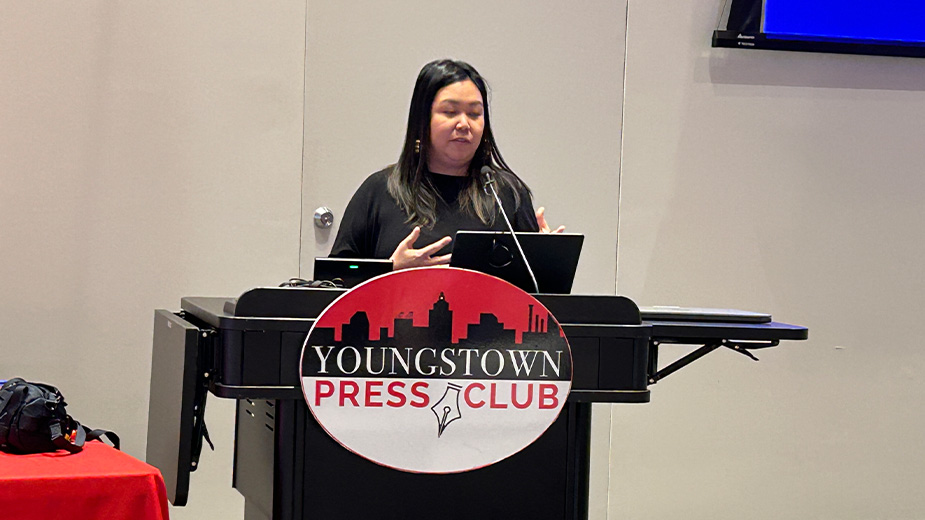Hearings Begin on Bill to Subsidize Nuclear Plants
YOUNGSTOWN, Ohio – A revised bill introduced earlier this month that would help rescue Ohio’s nuclear power industry is starting to make its way through the state legislature, causing concern among those who view it as nothing short of a bailout for bankrupt FirstEnergy Solutions.
House Bill 6 would provide subsidies to two nuclear plants owned by FirstEnergy Solutions: the Davis-Besse plant near Toledo and the Perry nuclear plant along Lake Erie.
“We’re vehemently against HB6,” said Bill Siderewicz, president of Clean Energy Future, based in Boston. Siderewicz is spearheading the development of a second natural gas-fueled energy generation plant in Lordstown. “I have yet to find anyone who supports this bill,” he said.
The new plant is slated to draw an investment of more than $900 million and lead to the creation of hundreds of construction jobs at the site.
The bill would create the Ohio Clean Air Quality Development Authority, which would provide during the first year “clean air credits” under the Ohio Clean Air program to power plants that produce zero carbon emissions. The credits would amount to $9.25 for every megawatt-hour produced and could be adjusted for inflation over ensuing years.
Nuclear plants would meet this requirement, and the bill could potentially allow subsidies to wind and solar energy operations too. However, wind energy development has stalled in the state, while a solar operation would have to produce at least 50 megawatts of power to qualify. Currently, there are no solar farms of this size in Ohio.
Coal-fired and natural gas plants could also qualify for subsidies at lower rates – the bill lacks specifics on this – under a “reduced emissions resource” provision in the bill.
Funding for the program would come in the form of monthly surcharges of $2.50 for residential energy customers, $20 for commercial customers and $250 for customers classified as industrial.
Commercial and industrial customers that use in excess of 45 million kilowatt hours of electricity over a single year at a single location would be charged $2,500 per month, according to the legislation.
“It amounts to a regressive tax,” Sidrewicz said. “The ones who will be hurt by it are the ones that can’t afford it. It’s horrible.”
Siderewicz has said that such legislation could threaten energy-efficient power plants such as the ones he’s planning to develop in Ohio. The company is in the process of lining up potential equity investors for the second Lordstown project, the Trumbull Energy Center.
The new plant would be located on the Lordstown Industrial Park, next to the Lordstown Energy Center, which Siderewicz helped develop two years ago.
“Our consultant, Whitehall & Co., is interviewing investors in Europe, New York, Canada, Korea, Japan [and] educating them about the future of this project,” Siderewicz said.
He is hoping that financing for the Trumbull Energy Center could be secured by this summer in time for a groundbreaking in the fall.
Proponents of the oil and gas industry also oppose the bill. Chris Zeigler, executive director of API Ohio – the state chapter of the American Petroleum Institute – calls the bill an attempt to support the unprofitable nuclear power industry.
“Disguising direct payments to nuclear plant owners via legislation that claims to support all types of zero-emission generation, which the legislation actually negatively impacts, reveals what this is really about – supporting uneconomic nuclear plants at the disadvantage of consumers,” he said.
He said wholesale electricity prices have declined by 50% since 2008 because of more efficient, natural gas-fueled electric generation plants. House Bill 6, he continued, “would deliberately distort the market and reverse these benefits to the detriment of Ohio consumers.”
Barbara Sykes, director of AARP Ohio, declared in a letter to Ohio Speaker of the House of Representatives Larry Householder that the organization would “be aggressively fighting to defeat any attempt to subsidize the nuclear industry on the backs of Ohio customers.”
Still, Ohio’s nuclear power industry employs thousands of people either directly or indirectly, contributing $510 million to the state’s GDP, according to Dave Griffing, vice president of government affairs for FirstEnergy Solutions.
During testimony presented April 17 before the House Subcommittee on Energy Generation, Griffing said the company’s two nuclear plants provide power to more than 2 million homes.
FirstEnergy would likely have to make a decision this summer as to whether to issue a final decision to deactivate both Perry and Davis-Besse.
“The impact of losing the state’s nuclear facilities cannot be overstated,” he told the committee in a prepared statement. “If these facilities are lost, Ohio would be forced to import about 12% of its power. Carbon and harmful emissions will increase. Grid resilience will deteriorate. And costs to consumers will go up.”
Moreover, should the bill fail to pass and the plants close, it would “eliminate thousands of highly skilled jobs and represent a loss of economic vitality for many of our communities.”
Twelve witnesses spoke in favor of the bill during the April 17 session.
Clean Energy Future’s Siderewicz said that he’s hoping legislators are able to see through this attempt at a taxpayer bailout of a failing and uneconomic industry.
“We’ll see where it goes,” he said. “We’re assuming common sense will prevail here, not silliness.”
Pictured: FirstEnergy’s Davis-Besse nuclear power plant outside Toledo.
Copyright 2024 The Business Journal, Youngstown, Ohio.



